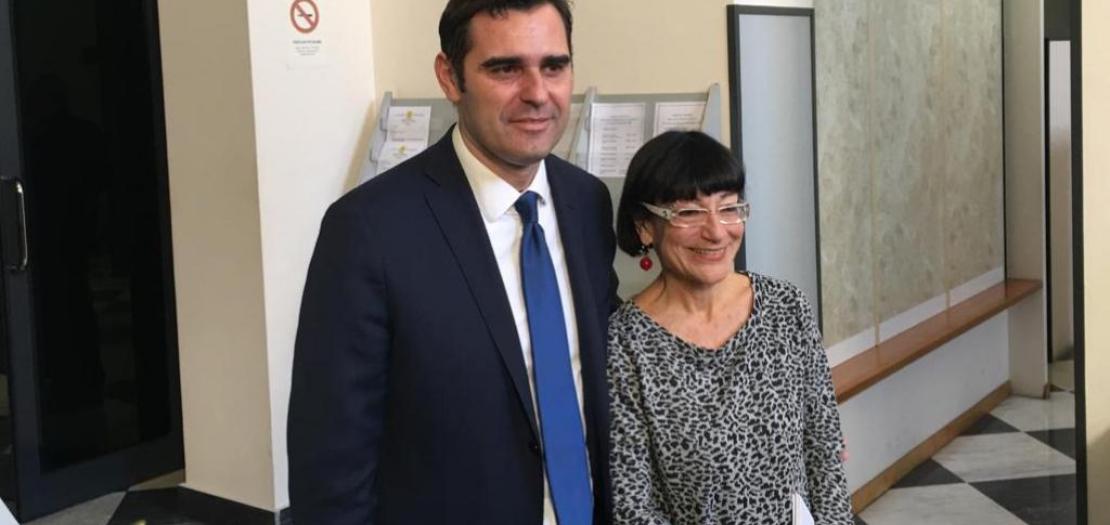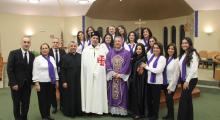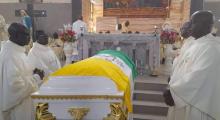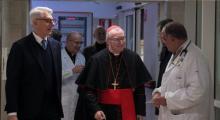Issued by the Catholic Center for Studies and Media - Jordan. Editor-in-chief Fr. Rif'at Bader - موقع أبونا abouna.org

French Romilda Ferrauto, “pillar” of Vatican Radio appointed senior advisor, two new assistants to the director and an office manager. Alessandro Gisotti: «A way to strengthen our work».
A French, a Peruvian and two Americans. “It's not an Italian team” – no doubt - the one appointed by the prefect of the Department of Communication, Paolo Ruffini, to the Holy See Press Office in support of the young Italian ad interim director Alessandro Gisotti, who exclaimed: “It's an international team!”. A new structure, already anticipated by Ruffini on 31 December last in the commentary statement regarding the daring resignation of the Press Office director, Greg Burke, and his deputy, Paloma Garcia Ovejero, which boosts the number of roles within the organization chart of Vatican communication, already enriched on 18 December last by the appointment of Andrea Tornielli as editorial director of the Vatican media.
In the Holy See Press Office, traditionally led by a director and a deputy director (and alongside them the various employees for secretarial offices, accreditations, accounting and so on), four other new figures have now been added: a senior advisor, Romilda Ferrauto, French, for 25 years head of Vatican Radio’s French editorial department, former assistant to the Press Room in the last five Synods, and president of the first and only women's association in the Vatican; then the appointment of the director‘s assistants: the American nun Bernadette M. Reis, FSP, editor of Vatican News and consultant to the Commission for Communication of the UISG, and the Peruvian Raúl Cabrera Pérez, former editor of Vatican Radio and collaborator of the Commission for Information to the Last Synod of Young People. Finally, the office manager of the Press Office, a post entrusted to the American Thaddeus M. Jones, whom everyone knows as "TJ", member of the coordination of the Vatican News Portal Office and former official of the Pontifical Council for Social Communications.
All of them are professional journalists, all of them have a long experience of working “behind the scenes” of the Holy See's communications sector, all of them come from Vatican Radio. One may see an attempt to restore that partnership that for years, under the guidance of Father Federico Lombardi, has tied the Press Office to the historic radio station, which was abruptly interrupted by the media reform initiated by the previous perfect, mgr. Dario Edoardo Viganò, that had inevitable repercussions on the mobility of personnel and the quality of services.
"In this difficult phase the Holy See Press Office and Radio, or rather its heritage, are working together", Gisotti was sure to clarify when presenting to journalists the new structure, composed as "quickly as possible" as an "exceptional measure for an exceptional situation" (that is Burke and Ovejero’s "unexpected" resignation at the end of the year), in an "attempt to strengthen the Press Office which cannot be reduced to the director alone but is a working community".
Gisotti will be flanked by Ferrauto, who has been serving in the Vatican since 1981, described as a "war machine" from a professional point of view by her French colleagues who worship her as a "diva" (an article by Le Temps defined her in this way), to whom she has been able to guarantee precise and timely information and interpretation of the key moments marking the pontificate and the life of the Sacred Palaces. And it is precisely the direct relationship with journalists - extended beyond the French circle – Ferrauto’s top priority: "I am happy to find you again, even if in a different guise. My role will also be to listen to your expectations. Believe me, I'll do it willingly, hoping to contribute, as part of my duties, to good Vatican communication," she said with excited determination.
Her role as senior advisor is not linked to the ad interim director: "It's a project that looks farther, beyond the ad interim," Alessandro Gisotti explained, adding "for my will and that of the prefect is that my interim last as little as possible, we realize that we must return to normality ...". Anticipating the questions of the reporters present in the room, the new spokesman - "a son of Vatican Radio" as he called himself, leading journalist of Vatican Radio and then of Vatican News (his are the portal’s most brilliant interviews, as well as, during the reform, the responsibility for renewal of the Pope’s communication on social media) added: "I know what is crossing your mind: why not appoint her as ad interim deputy director? There is no nomination because if the director is already on a fixed term, it is not possible to multiply the ad interim positions".
Certainly the risk - considering the newly created position - is that there may be some misunderstanding in the definition of roles: an example above all, when the director of the Holy See Press Office will be out of office for papal travel (next one scheduled in eleven days with the transfer to Panama) who will make the statements? And who to contact if there is a need for clarification or more information? At least these are the first observations that emerged during the briefing. Romilda will be a referent but "the director alone can make official statement", was the answer. The French journalist will therefore limit herself to being "a special adviser for trying to respond as much as possible to the requests of journalists, a help in the preparation of conferences and public events".
The other three new assistants and office managers, chosen specifically from different languages areas and cultures to embrace different sensitivities, have also been put to work to help the director in his various responsibilities (including the drafting of the most delicate dossiers), in connection with the Secretariat of State and to deal with the difficult commitments that lie ahead in the first half of 2019. Starting with the summit of the presidents of the world's episcopal conferences on the subject of abuses, which is already the subject of "excessive media expectation, as if it were an event halfway between a Council and a Conclave", as observed yesterday by Tornielli in his editorial published by L'Osservatore Romano.
With this new reconfiguration, above all, it seems that the Holy See Press Office wants to recover an internal cohesion and a humanity of relations - and the fact that they all have been colleagues will help in this sense – a bond that, amid retirements, transfers, movements of personnel from one office to another with a consequent sudden change of tasks (as wanted by the "reform") seems to have been missing in the last two and a half years. "They are all friends who have worked together, names chosen with the prefect on the basis of experience, spirit of service, and personal bond. It also seemed to us to be the best way to coordinate with the Vatican media and editorial direction," Gisotti stressed.
In short, the "complex machine" that has become Vatican communication continues to transform itself from day to day and there are still many steps to be taken. It is to be seen when it will be possible to reach a long-lasting and stable structure. In any case the new is to be welcomed: as Pope Francis affirmed in his Evangelii gaudium, cited by Gisotti in his speech, the criterion "it has always been done this way" cannot be valid in the Church.






